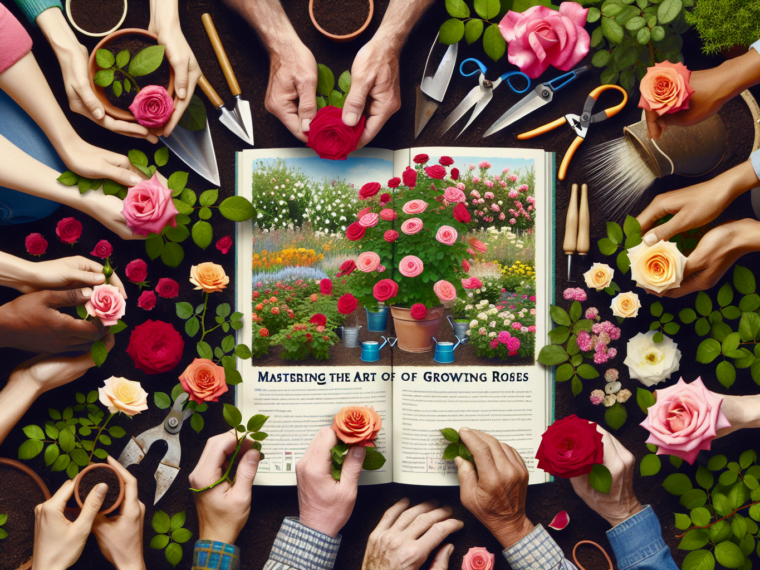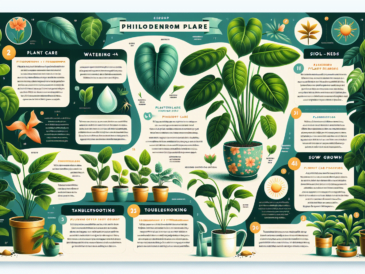Now we’re diving into the heart of ‘Roses Love Garlic: Companion Planting and Other Secrets of Flowers’. It’s a rich and incisive source for gardening enthusiasts, presented by the well-respected Louise Riotte. This focus is specifically on the roses part. Here we find out exactly why roses and garlic are match made in the garden, and how to grow some top-notch roses for yourself! No cutting corners here, each nugget of wisdom is worth its weight in compost.
Brief overview of ‘Roses Love Garlic: Companion Planting and Other Secrets of Flowers’
Roses Love Garlic isn’t just a catchy title; it’s packed with essential knowledge for anyone hopeing to hone their green thumb. Through her book, Riotte unveils the hidden relationships between plants, offering practical advice on how to use these relationships to your advantage. Let’s not jump the gun, though; you won’t find roses covered in garlic cloves. It’s subtler than that.
Introduction to the author, Louise Riotte
Maybe you’re wondering who this Louise Riotte is and why should you listen to her? Well, Riotte was a veritable oracle of gardening knowledge. She cultivated (pun intended!) an impressive following through her eleven bestselling books on gardening, farming, and nature lore. Her works remain as relevant today as when they were first published.
Focus on the section about growing roses
Alright then, let’s get down to the crux of the matter – roses! The romantic charm of a rose can easily win over any gardener’s heart. But if you’ve ever tried your hand at growing them, you’ll know that it takes more than a sprinkle of water here and there. So, we’ll focus on Riotte’s expertise centred around growing roses at home. Get your gardening gloves ready because it’s time to get hands-on with roses!
Grasping the Essence of Roses
If we’re being simple about it, roses are truly a gardener’s best friend. Sure, they’re not just, uh, regular plants. These beauties have specific characteristics that set them apart from the rest.
A look at Roses- What are they really?
Typicaly, when folks think roses, the classic image of a lush, red flower pops up in their heads. And yet, they’re so much more complex than that. Let’s talk look and feel, their allure comes from their blooms of course but also from the sharp thorns lurking below. A mix of danger and beauty, you could say.
Diversifying- A Peek into Various Types of Roses
Mind you, not all roses are created equal. Some grow in clusters, that’s your Floribundas for you. Others like the Hybrid Teas sport single blooms and then you’ve got climbers that, well, climb!
The Necessity to Understand Roses for Green Thumbs
Now this may sound funny but getting to know your roses is key if you want them to thrive. It ain’t enough to water, prune and hope for the best. You’ve got to understand their needs, their likes and dislikes if you will. This is your ticket to successful rose cultivation.
Making the Ground Ready for Planting Roses
It’s pretty crucial to keep in mind, sure it’s a cliche but it’s true, that soil prep is vital. Why you ask? Well, for roses to blossom wonderfully, you need to plan carefully beforehand and ensure the earth is spot on. For a rose plant to thrive and display its full potential, a nicely prepped piece of land will do wonders. A delicate procedure indeed but one well worth it in the long run.
The Significance of Prepping Your Soil
Now this might sound like common sense, or it might not. But the care we put in at the beginning can make all difference. Take it from us, soil preparation matters a lot! The hunt for optimal growth for your roses begins with the soil – it’s no rocket science at all. Correctly invested time here pays off down the line, ensuring your labor wasn’t in vain.
Roses’ Dream Earth Conditions
So let’s get down to business, shall we? Talking about ideal soil conditions for our precious roses; they are not too fussy but do have preferences. Preferably, loamy soil filled with plenty of humus would be the best bet. Moreover, a slightly acid pH balance of around 6.5 to 7 is just their cup of tea. Give ’em these conditions an watch ’em bloom.
Tips & Tricks for The Perk-up of Soil Quality
I’m gonna let you in on some garden secrets here – little tweaks to put spring in your soil’s step. To jump-start things, enriching your soil with organic matter and compost is a good starting point. This improves water retention while making for a much healthier mix. Another way? Trying soil conditioners, natural ones are best. They bring nutrients and aerate the soil, aim for a breath of fresh air for those rose roots. All little changes, but don’t underestimate their impact!
Companion Planting and Roses: An Overview
If we’re talking straight, companion planting is essentially when you grow different crops together, taking advantage of the unique benefits they offer each other. This ain’t rocket science folks, it’s simple and quite rewarding.
Why Companion Planting Benefits Roses
So, why should anyone bother with companion planting for roses? Well, let’s cut to the chase – having the right companions around your roses can make all the difference! It’s all about supporting good growth, warding off pests and enhancing blooming. In doing so, it results in healthier and more vibrant roses. Although it may sound like a tall order, you’ll be singing praises once you see the outcomes.
The Heavy-Hitters: Best Companion Plants for Roses
When it come’s to selecting companions for your roses, some plants really take the cake. For instance, Garlic is a tried and tested companion to roses. Not only does it ward off bad pests, but it’s also beneficial due to it’s unique growth habits – don’t knock it ‘til you’ve tried it ! Other worthy mentions include perennials like Lavender and Marigold that support good plant health by way of deterring unwanted insects. Be yourself open to experiment – there’s a whole world of combinations waiting for you to discover out there.
Here’s the scoop on how to plant roses, care for them, and love our favorite bloomers as much as they love garlic!
Choosing the right time to plant roses
Timing, they say, is everything – this certainly holds true when planting your roses. A good rule of thumb to keep in mind: early spring, or autumn are often considered the best times. The weather’s cooler rather than scorching hot, making it an ideal time to get your roses in the ground. But here’s a heads up! Stay clear of periods when the soil would be freezing cold or waterlogged because that wouldn’t do your rose plants any good.
Steps for planting roses
Planting roses isn’t rocket science. It’s straightforward if you know the ropes. Set out by preparing a deep and wide hole (twice the size of your root ball) in some good old soil. Place the rose bush in the middle ensuring that it’s at soil level. Then, simply fill up with soil again.
Before patting ourselves on back, let’s not forget a critical step post-planting part. Don’t be mistaken, this ain’t over yet! Water down the newly planted rose immediately. When I say immediate, I mean right away – Once foot’s off that spade, go fetch your watering can.
Post-planting care
Once planted, your responsibility doesn’t end there. Like anything worth doing it requires consistent love and attention. Pruning back the tops lightly once buds start appearing will let your new gather strength for a dazzling show! Trust me; you’ll thank yourself when those gorgeous blooms start showing up and make all your handwork worthwhile!
And remember, roses are only too eager to reward abundance care with rich bursts of beauty. So folks, do justice to your gardening efforts by being attentive to your blooming beauties after planting them.
Takin’ care of roses is an exercise in regularity and attention to detail. Its vital contents include routine watering, nourishing the plants, preventing diseases and pests, and knowing when and how to prune ’em.
Regular watering and feeding requirements
Typically, roses crave water and nutrients pretty often. So, providing them regularly help roses thrive and flourish. The watering schedule might vary depending on the type of rose you’ve got at hands and your local climate. However, the general thumb rule applies here: make sure the soil never goes dry! On top of this, nutrient-laden feeds play a crucial role in their growth cycle, ensuring that your roses are healthy with a vibrant display of blooming flowers.
Pruning techniques for roses
Diving into pruning techniques, it’s crucial to understand tha one size doesn’t fit all. Different rose breeds require unique approaches to pruning. The primary goal with pruning, however, remains the same across breeds – that’s shaping your plants, enhancing growth and removing deadwood. Be careful to prune at the right times – doing so too early can harm the plant, while leaving it too late may results in stunted growth. Knowledge is the key here so arm yourself well.
Pest control and disease prevention
Unfortunately, roses aren’t immune to pests and diseases but there’s always a way around this curveball. Regularly inspecting your roses for signs of infection or attack by pests goes a long way in nipping any potential trouble in the bud – so to speak! And let’s not forget disease prevention.
A keen eye will catch stains, spots or anything unusual which typically signals the onset of fungal or bacterial infections. Timely action here could mean the difference between life or death on your beautiful roses!
That’s the lowdown on maintaining roses. If it looks like a tall order, remember, when it comes to roses, the reward far outweighs the effort.
Picking The Right Moment to Harvest Roses
When it comes down to the harvesting of roses, timing is key. It’s absolutely necessary to know exactly when these beauties have reached their prime. Pinpointing the ideal time to gather up your roses can truly elevate their quality and extend their life.
Proper Procedures for Rose Harvesting Without Damaging The Plant
Harvesting roses isn’t simply a matter of tugging at them until they separate from the bush; should be more subtle in our approach. There exists a methodology to cutting these flowers so as not to inflict any harm on the plant which needs to be followed correctly.
Roses: Multifaceted Applications
Roses aren’t merely for admiring in one’s garden; they serve an array of purposes beyond aesthetics. These versatile blooms lend themselves to a variety of fields, making them a favorite among many.




